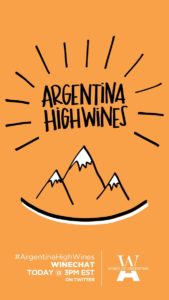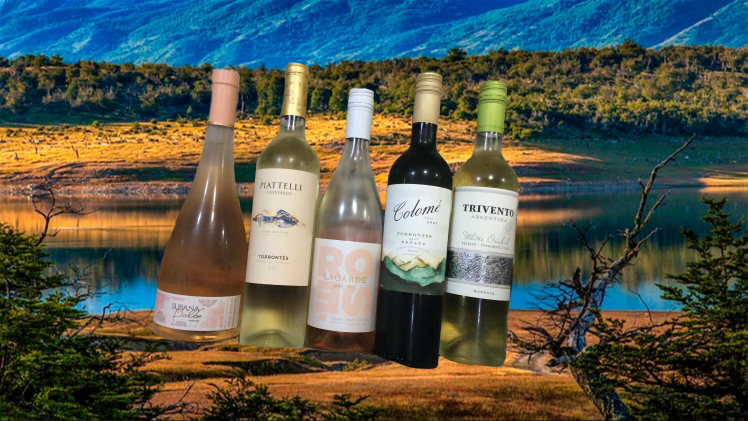Effect of Altitude on Wines
You see it all the time in wine conversation. The tech sheets often state what the vineyard altitude is. By definition altitude is the height of an object or point in relation to sea level or ground level. So why is this so important in wine production? Well, the biggest difference really deals with the climate. As we increase in altitude, the temperature decreases. This is even more obvious at night.
What this means for the vines themselves, is that there typically is a longer growing season which allows the fruit to hang on the vines longer and ripen more slowly. In turn this lack of rush to ripen gives the wine a lower alcohol percentage but an increase in acidity.
Just as our metabolism slows down in the cold weather, so does the vines’ metabolism. We shiver and get goosebumps to adapt, but vines can’t do that! Vines that are in higher altitude, see colder weather so the plant enters a stressful biological situation. It adapts by altering its metabolism.
Altitude also has an effect on soil composition. Generally speaking, higher altitude vineyards have lower nutrients with rockier soils, but better drainage. These characteristics provide a stressful environment for the vines which lead to smaller berries with thicker skins. We all know size matters, but in the case of winemaking, bigger isn’t better. In fact smaller berries lend themselves to more intense color and flavors and increased tannins.
That all sounds great, doesn’t it? Well, to get excellent wines you have to conquer some major challenges. Maintaining a steep vineyard is not an easy task, not to mention the wind. There is a greater risk of frost damage, vines are more exposed to disease and the difficulty of fruit damage due to wind chill.
Argentina’s Wine History
 Argentina’s wine history began in 1551 when the Catholic priests planted vines in order to have wine for their masses. As immigrants entered the region, new wine making techniques were introduced. In the mid to late 1800s, Argentina, thanks to the expansion of the railroad system and the incorporation of Patagonia began to focus on their wine industry. In 1853, the first school of agriculture in the country was opened in Mendoza and was responsible for the introduction of French vines to the region.
Argentina’s wine history began in 1551 when the Catholic priests planted vines in order to have wine for their masses. As immigrants entered the region, new wine making techniques were introduced. In the mid to late 1800s, Argentina, thanks to the expansion of the railroad system and the incorporation of Patagonia began to focus on their wine industry. In 1853, the first school of agriculture in the country was opened in Mendoza and was responsible for the introduction of French vines to the region.
Twenty years later, Argentina had 5,000 acres of vineyards and forty years later the number increased to 25,000 acres under vine. As the twentieth century was welcomed in, the acreage skyrocketed to over 519,000! Skip forward seventy years, and wineries were complete with large facilities and production. Unfortunately, they also were producing wine under the “more is better” concept. Argentina was producing a lot of wine, but the quality was poor.
In the 1990s, the arrival of Neoliberalism shifted the global market and Argentina found itself with an influx of business minded people who believed (rightfully so) that the future of Argentine wine was not in bulk, but rather in producing small volume high quality wines that can be enjoyed by their own citizens as well as exportation to other countries. In order to improve upon their quality, the wine industry introduced new technologies, growing systems, and paid more attention to the grapes as well as marketing. Today Wines of Argentina has 200 member wineries and exports to 50 countries.
The Chat
In mid-October, I was asked to participate in an online #ArgentinaHighWines winechat led by Laura Maniec of CorkBuzz in NYC. A group of winelovers were led through an hour-long education on wines produced in the high altitude regions of Argentina. Here are some highlights of the conversation:
- Mendoza is the size of Illinois and anywhere from 2,500 – 5000 feet above sea level.
- Climate can be divided into a discussion about rainfall, heliophany and temperature, all of which are affected by altitude. Heliophany is the amount of sunlight and is affected by latitude and altitude.
- Rainfall is regulated by large pressure depression systems and geographical barriers such as mountains.
- In temperate zones, that for every 155 meters of linear rise, the average temperature drops by 1 degree.
- As a result of lower atmospheric pressure, the vine works under stress of transpiration, since it loses more water than normal and regulates downward photosynthesis= lower yields.
•Check out this cool info graph showing altitude in regions all over the world. #ArgentinaHighWines pic.twitter.com/3zdDDVe8Fd
— Laura Fiorvanti (@lauramaniec) October 17, 2018
Time to Taste

2017 Colome Torrontes by Bodega Colome (SRP: $12.99)
Located in Cafayate, a small town located in the Salta province of Argentina is found at 5,522 feet above sea level. The winery was founded in 1831, by the Spanish governor of Salta, Nicolás Severo de Isasmendi and Echalar. It is the oldest operating winery in Argentina. Malbec and Cabernet Sauvignon vines were planted by his daughter in 1854 and three vineyards are still producing wine today. After remaining in the family for 170 years, Bodega Colome was purchased by Donald Hess in 2001, also the first year they produced a Torrontes, the signature white grape of Argentina, is a cross of Muscat of Alexandria and Criolla Chica (Mission grape.)
If you are looking for a light crisp wine that can be a Sauvignon Blanc replacement, this is a wine you will want to seek out. Highly aromatic with citrus zest, white flowers and grapefruit.
2017 Piattelli Vineyards Reserve Torrontes (SRP: $12)
The fruit for this Torrontes can be found on vineyards planted at 6000 ft in elevation. Valeria Antolin is the fourth generation winemaker for Piattelli Vineyards. 20% of these grapes were aged for two months in French oak barrels. Although not overwhelming, the oak does impart a presence into the wine and there is a definitive difference between the two bottles. This Torrontes is a medium bodied wine, with a lychee and melon aromas. As it opened up (and warmed up a bit) I began to get lovely floral notes. On the palate, the melon continues along with tangerine and a hint of herbs.
2016 Trivento White Orchid Reserve Torrontes (SRP: $11)
Unlike the previous two Torrontes, this wine is a blend of 85% Torrontes with 15% Pinot Gris. The Pinot Gris adds a bit more body to the wine than a 100% Torrontes. When asked why they named the wine White Orchard, they responded, “The unique blend of Torrontes & Pinot Grigio give a floral perfume filled with orchid, chamomile, jasmine & rose notes!” I have to agree with their decision, the aromas on this wine are intoxicating.
Trivento means “three winds.” The Sudestada, Zonda, and Polar winds cross Mendoza and they laid tribute to these winds using it as their name. They are relatively new to the wine industry, being founded in 1996. Since then, they have become the most diversely distributed Argentine wine brand in the world.
2017 Susana Balbo Rosé Del Vallee de Uco (SRP: $19)
Susana Balbo received her enology degree in 1981 and consulted for many wineries prior to beginning her own winery. She is one of the most celebrated females in Argentina. She is hands on for the entire wine making process; planting of the vineyard, canopy management, and harvesting decisions and believes in maintaining the long-term viability of the land.
The wine is a blend of 60% Malbec and 40% Pinot Noir and is harvested from from vines that are almost 4,000 feet above sea level. The bottle wins the award for the prettiest, but luckily the wine inside is equally beautiful. This rosé is elegant on the palate with white nectarines, grapefruit and watermelon. After a bit of time in the glass, I was greeted with sweet violets, cherry and chalk.
2018 Bodega LaGarde Rosé
The Pescarmona family purchased Bodega LaGarde in 1969. The purchase was made with the goal of creating a winery that produces high-end wines. They were the first producers to plant in Latin America non-traditional vines such as Viognier and Moscato Bianco. The wine is a blend of 50% Malbec and 50% Pinot Noir and hand harvested at 1050 feet elevation.
In order to add a bit of freshness and liveliness to the wine, winemaker Juan Roby decided to use carbonic maceration with a portion of the Malbec for this year’s vintage. At 12.9% alcohol, this is patio sipper that can be enjoyed all year long. A lower acidic rosé, with flavors of cherry raspberry and spice.
~Sláinte!
Please visit our sponsors:



I had a chance to visit the Colomé and Piattelli (both outside of Salta), and Susana Balbo facilities and highly recommend them. Lucky for us Argentinian wine production shifted. Thanks for taking me back to the land of high altitude wines!
Thanks for reading Lynn. I am jealous that you got to visit. It is on my bucket list.. My bucket list seems to be getting longer and longer! LOL